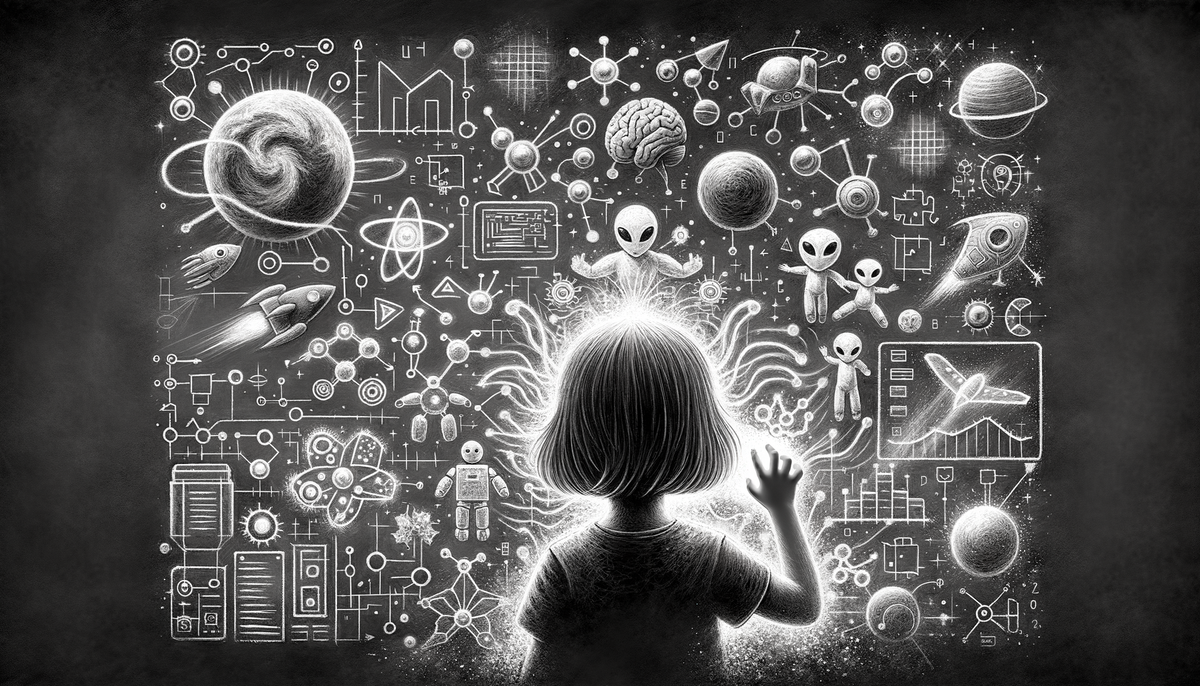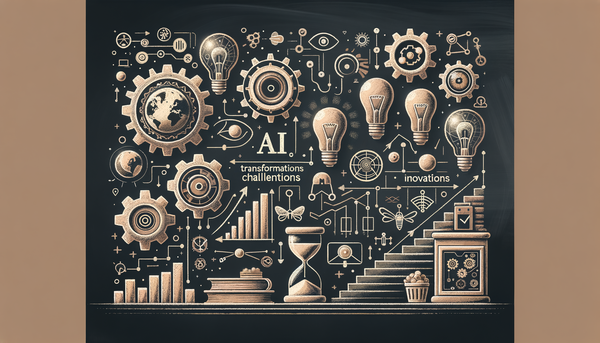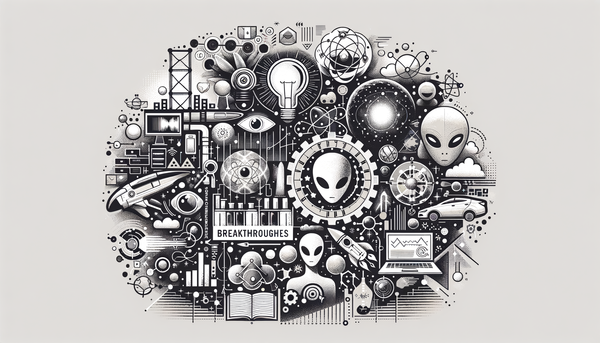Google's Game-Changer in AI Image Generation and the Future of Work

"Humans who don’t embrace AI will be replaced by AI"—a declaration that sets the tone in today’s dynamic tech landscape, where legacy giants are reinventing themselves, startups are sprinting towards superhuman productivity, and cutting‐edge innovations blur the lines between imagination and reality.
Intel’s New Chapter Under Lip-Bu Tan
When Lip-Bu Tan stepped in as Intel’s new CEO, it wasn’t just a change in leadership—it was an inflection point for a company that had seen its fair share of setbacks and missed opportunities. Formerly leading Cadence Design Systems, Tan inherits a legacy where the previous modernization strategy under Pat Gelsinger made ambitious, though sometimes hiccup-prone, strides. Investing $20 billion in new manufacturing facilities across Arizona and beyond, Gelsinger’s IDM strategy was aimed at regaining lost ground after a tumultuous journey through the smartphone era and manufacturing challenges.
Despite these bold attempts, Intel’s recent history has been marred by a nearly 50% stock drop and substantial layoffs, a stark reminder of the harsh realities of not only competing in the semiconductor arena but also catching the wave of the booming AI market. Now buoyed by an $8 billion grant under the U.S. Chips and Science Act, Intel appears poised for a renaissance. Early successes, like the launch of the popular Arc B580 graphics card, signal that innovation is still in the DNA of this semiconductor titan.
In reflecting upon these developments, I find it essential to note that transformations in legacy industries are rarely linear. Much like the intricate components on a microchip, every decision at Intel connects to a broader ecosystem of innovation and regulatory oversight. The infusion of fresh leadership coupled with significant governmental support creates a promising scenario where traditional manufacturing may once again become a competitive advantage. Read more on this update.
Grab’s Vision: Embracing AI to Become Superhuman
There’s an electric air among those who champion radical digital transformation, and few embody this spirit like Grab’s co-founder Anthony Tan. In a stirring speech delivered at Converge Live in Singapore, Tan asserted that the future belongs to those who harness artificial intelligence. His words are not mere rhetoric; they signal a deep-rooted belief in AI’s potential to transform human capabilities. As he put it, “AI makes you superhuman.” This is far more than a catchy slogan—it’s a call to action for companies and individuals alike.
Under Tan’s guidance, Grab has launched a striking initiative known as the "generative AI sprint." Over the course of just nine weeks, this sprint is charged with developing features that augment productivity across the board—from empowering drivers with a digital assistant to providing everyday entrepreneurs with tools to optimize their operations. Take, for example, the merchant AI assistant designed to help home cooks in bustling Jakarta transform culinary passion into profitable ventures. This finding illustrates the profound economic and societal shifts underway, where AI integration could redefine roles and create opportunities where none were imagined before.
When putting these innovations into perspective, I am reminded of how technology transforms everyday experience much like a catalyst in a chemical reaction—speeding up, enhancing, and even revolutionizing processes. Yet, behind this enthusiasm lurks an undercurrent of caution. Recent reports from the World Economic Forum have suggested that up to 40% of employers could consider workforce reductions as AI evolves. The conversation, therefore, is not about AI replacing humans, but rather about how AI can amplify human potential if embraced with the right strategy. For further insights on AI trends in business, check out our latest developments on AI opportunities and challenges.
Google’s Gemini Innovations: Robotics and Multimodal Creativity
Over at Google, innovation is not measured solely by incremental improvements but by leaps that redefine what we perceive as possible. The launch of Gemini Robotics AI models marks an exciting chapter in the interplay between artificial intelligence and robotics, melding perception with physical dexterity. Powered by the robust Gemini 2.0 technology, these models were designed not only to see and listen but also to interact with a fluidity that verges on human adaptability. Imagine robots adept at everyday tasks—such as picking up a coffee mug with delicate precision or effortlessly adapting to unexpected changes in their surroundings.
One of the standout innovations is the Gemini Robotics-ER model, which leverages embodied reasoning. This empowers a robotic system to calculate spatial awareness and adjust its actions in real time. In a delightful analogy, it’s like watching a basketball player recalibrating mid-air to make the perfect dunk—even if the game’s rules have suddenly changed. The system’s alignment with safety protocols inspired by Isaac Asimov’s revered three laws ensures that while these robots push the envelope, they continue to operate within defined ethical boundaries.
Google’s strides don’t stop at robotics. Their development of Gemini 2.0 Flash introduces a native multimodal AI image generation system that allows rapid edits, style transfers, and the creation of consistent illustrated narratives from text prompts. This integration of text and visuals eliminates the need for disparate models, offering an impressively seamless experience for developers and marketers alike. This breakthrough has the potential to redefine AI-driven creativity by offering dynamic tools for content creation—a leap over competitors who are still catching up.
The implications of such technologies are vast. For one, imagine educational tools that can generate custom illustrations in real time to help explain complex abstract concepts, or marketing campaigns that iterate visuals based on audience sentiment almost instantaneously. The iterative process becomes not just faster but also more creative, as users engage in conversational editing to refine images to perfection.
You can explore more on similar AI advancements in our recent posts about Gemini 2.5’s impact and the broader evolving AI landscape on AI.Biz.
Legislative Moves: Protecting Minors in the AI Era
Amidst rapid technological advancement, regulatory measures are catching up—a necessary check in an era of exponential innovation. A recent legislative proposition from El Paso lawmaker Mary Gonzalez underscores the pivotal need to shield minors from the proliferation of AI-generated explicit content. The bills—House Bill 581 and House Bill 421—seeks to mandate stringent age verification for users, ensuring that deepfakes involve only consenting adults. Gonzalez’s impassioned remarks about the severe impacts of humiliation, degradation, and dehumanization resonate with many, especially in a digital age where the boundaries between reality and synthetic content are ever more blurred.
This legislative initiative is more than just a reactive measure—it is part of a broader conversation about ethics, consent, and the safeguarding of vulnerable individuals in the digital realm. As companies race towards innovation, lawmakers are advocating that accountability, transparency, and robust safety mechanisms keep pace with technological advancements. The bills highlight that as we create increasingly sophisticated algorithms and generative models, we must not lose sight of human dignity and ethical responsibility.
It is worth noting that this regulatory debate is occurring parallel to market exuberance, where AI is touted as a means to unlock unprecedented productivity. In this context, preserving safety, especially for minors, remains a core societal imperative. A balanced approach, where technological progress goes hand in hand with robust legal safeguards, is the need of the hour.
Synthesizing the AI Landscape: Innovation, Transformation, and Responsibility
The narrative of artificial intelligence today is complex and multi-faceted—a tapestry woven from threads of corporate reinvention, groundbreaking technological innovations, and rigorous regulatory oversight. On one hand, we have legacy companies like Intel, navigating the turbulent seas of market competition and charting a course towards resurgence under fresh leadership. On the other, visionary startups led by individuals like Anthony Tan are redefining business models by integrating AI so deeply that human capabilities are amplified to superhuman levels.
Meanwhile, the strides made by tech giants such as Google remind us that innovation is not confined to a singular path. Their work in robotics—crafting machines that interact intelligently with their environment—and the leap in image generation technology are testaments to how AI is opening up new avenues of creativity and production. These innovations are not simply about replacing the old with the new; they are about augmenting the human experience, enhancing efficiency, and ultimately driving progress.
Of course, as with any transformative technology, AI brings with it a set of ethical considerations and societal challenges. Legislators, tech leaders, and industry influencers now find themselves in a continuous dialogue about ensuring that as AI systems become more integrated into everyday life, they do so with respect for individual rights and social values. The protective bills proposed to shield minors from AI-generated explicit content highlight an essential counterbalance—a reminder that technological prowess must be matched by a commitment to ethical integrity.
Reflecting on these layers of innovation and responsibility, I'm reminded of Bill Gates’s observation, "I believe that computers will not only become an essential part of life, but also the way we think about life and its possibilities will be fundamentally altered." Today’s developments across giants and startups echo this sentiment, urging us to view AI not simply as a tool, but as a transformative force reshaping industries, art, and society alike.
Through the lens of these pioneering stories—from Intel’s strategic reinvention and Grab’s fervent push towards superhuman productivity, to Google’s fluorishing AI models and the necessary legislative safeguards—one thing remains clear: the future of AI is not written in binary code alone, but in the collective narrative of human ingenuity, ethical responsibility, and relentless innovation.
As we continue to monitor these developments, the interplay between corporate ambition, regulatory oversight, and technological brilliance promises to keep the discourse as vibrant as ever—a living, evolving narrative of our digital age.
"The machines were simple and harmless, developed by a human genius who set in motion something, which ultimately had far reaching consequences." This reflection reminds us that in the pursuit of advancing technology, the blend of human wisdom and ethical stewardship will remain our steadfast companion.
Further Readings
For a deeper dive into the groundbreaking shifts in AI and technology, please visit our related articles: Google’s Gemini 2.5 and the Future of AI Finance, A Leap in AI Reasoning with Gemini 2.5, and Google’s AI Chatbot: A Personalized Assistant Like Never Before.




